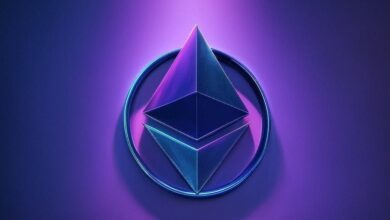Crypto Clash: Mutual Accusations of Market Manipulation Fuel Fiery Showdown Between Bitget and Floki

The Floki protocol and Bitget crypto exchange have recently engaged in allegations of market manipulation, following the listing and delisting of TokenFi (TOKEN), a token associated with the Floki protocol.
The discord between the two parties emerged in an October 31 social media announcement by the Floki team and a subsequent blog post by Bitget.
The Floki team asserted that Bitget had listed the TOKEN token even before its official launch, labeling Bitget’s action as a “fake token” introduction. In contrast, Bitget contended that the Floki team was under suspicion for market manipulation, alleging that they maliciously controlled the initial liquidity.
According to Cointelegraph, the Floki team had submitted a proposal to the Floki decentralized autonomous organization (DAO) on October 18, outlining plans for a staking program with a reward token designed to target a trillion-dollar industry with promising potential.
Simultaneously, they were in discussions with centralized exchanges regarding the listing of TokenFi. Notably, the DAO proposal didn’t disclose the token’s name, nor did it elaborate on the purpose of the “reward token.” However, the Floki team claimed that this information had been shared with several centralized exchanges.
The Floki team informed these exchanges not to list TOKEN until at least seven days post-launch, in compliance with DAO-established governance rules. They maintained that all exchanges had agreed to this stipulation, except Bitget. In fact, Bitget listed TOKEN prior to its official launch. Consequently, the token was not available for purchase when Bitget listed it.
On October 26, Floki issued a warning to investors, disavowing any current TOKEN listings on centralized exchanges as unauthorized, without explicitly naming Bitget.
The TokenFi token was scheduled for release at 3 p.m. UTC on October 27, although Coincodex data suggested it was listed at an initial price of $0.00005011 and launched on October 28, with time zone differences accounting for the date discrepancy. The token’s value promptly surged to $0.005850, marking an astounding gain of 11,574%. As of the present moment, its price has soared even further to $0.006053 per coin.
The Floki team accused Bitget of listing TOKEN without having any actual tokens to offer customers, resulting in withdrawal processing difficulties and a substantial $20 million liability. In an attempt to mitigate this, Bitget allegedly sought to purchase tokens from the TokenFi treasury at a 90% discount from the current market price, an offer that was rebuffed by the Floki team. Bitget’s subsequent announcement of “delisting” was purportedly a reaction to this refusal.
Nevertheless, in Bitget’s version of events, TOKEN was officially listed on October 27, 2023. After the listing, Bitget noticed significant price fluctuations in TOKEN, prompting suspicions of market manipulation by the development team, whom they accused of manipulating initial liquidity.
Bitget asserted that only $2,000 worth of initial liquidity was added to the token’s pool. They also pointed out what they considered to be an opaque token economy and an unclear vesting schedule, rendering the continued offering of TOKEN unviable.
In response, Bitget offered to repurchase all the TOKEN it had sold to its customers, reimbursing the token’s peak price prior to delisting, which amounted to $0.00605002 per token, approximately 121 times its initial price. This commitment aimed to cover any losses that may have occurred before the delisting. However, investors who had purchased TOKEN from Bitget would not benefit from any token appreciation after the delisting.
The Floki team contested Bitget’s claim regarding the initial liquidity, asserting that there was nearly $2 million in liquidity in each of the two TOKEN pools. They shared a screenshot from DEXTswap as evidence, although it only showed the current liquidity and not the initial liquidity referenced by Bitget.
Moreover, the abbreviated contract addresses in the image made it challenging to verify the pools through a block explorer, leaving the determination of TOKEN’s initial liquidity inconclusive at the time of publication.





